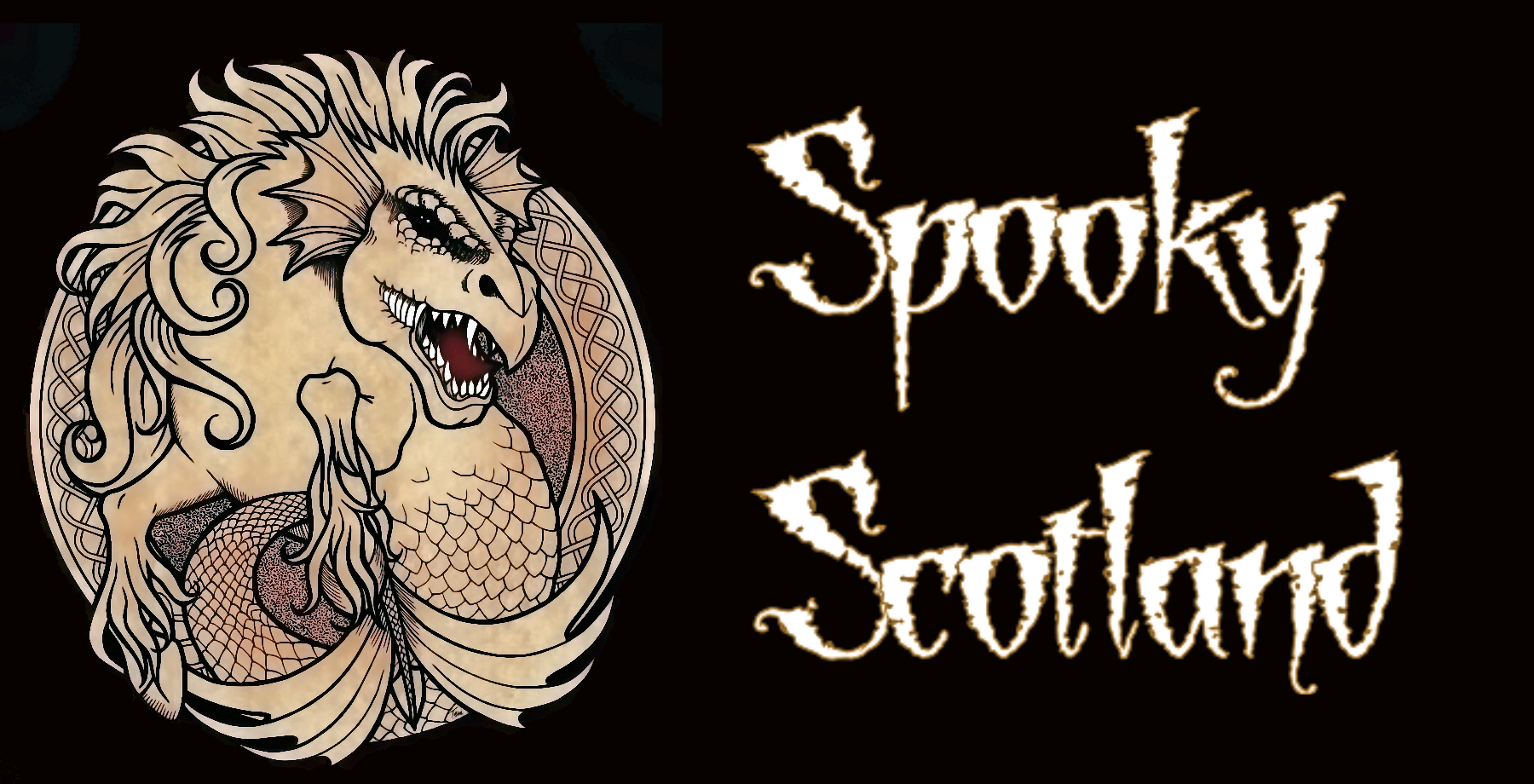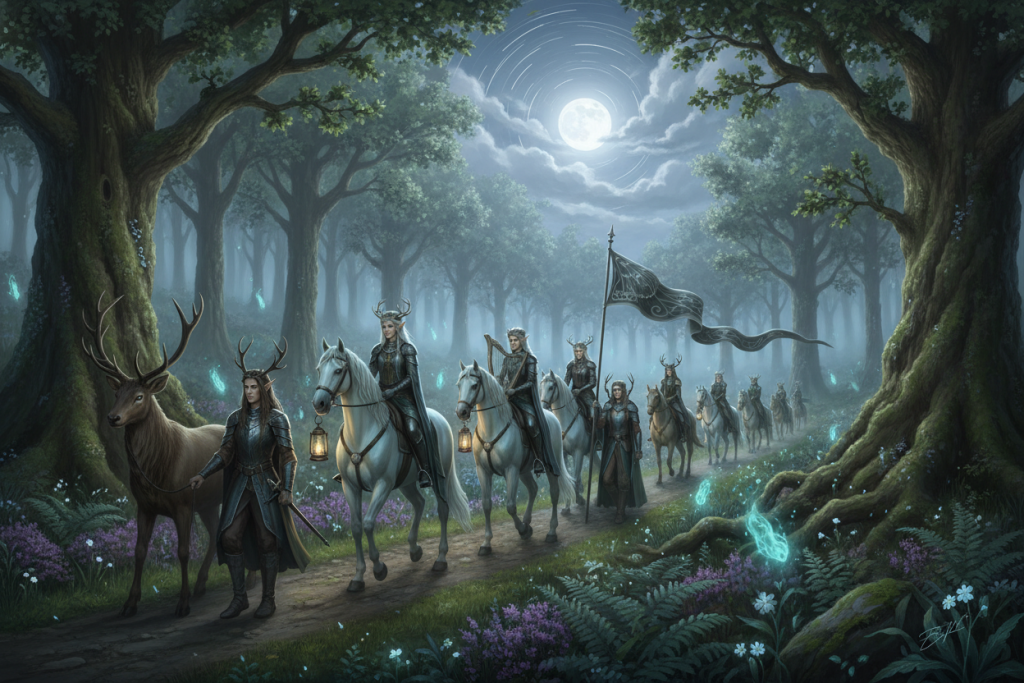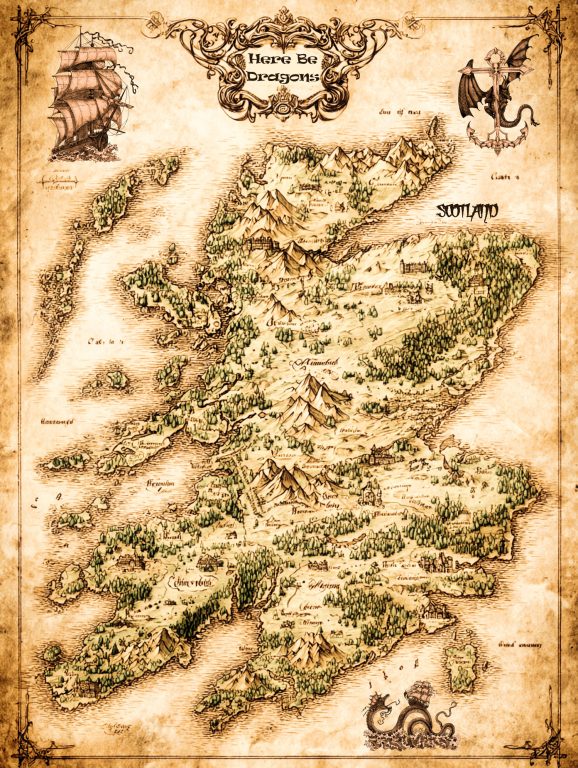Scottish Giantesses are formidable! In Scottish mythology, whenever you meet a giant, it is usually a folk memory of a powerful god or goddess. And these giant goddesses? They are stronger than the Gods. Human heroes who fight and overcome the goddesses’ sons and husbands better watch out, for there is nothing more powerful than a goddess looking for vengeance.
Scotland’s oldest myths thrum with the footsteps of giantesses: fierce hags, storm queens, and shape-shifting crones who made the mountains, hurled the winds, and ruled the seasons. The land is governed by colossal, often hostile powers—female sovereignty embodied in the Cailleachan (great hags). These aren’t “witches” in the modern sense. They are primordial goddesses whose moods manifest as tempests, droughts, floods, and sudden thaws. The lore of Scotland is bound closely to the land, and in its telling, you will find a living map of Scotland’s weather encoded in heroines and hag-queens whose names still cling to hills and glens.
Who are the Cailleachan Mòr?
The Cailleachan or “great hags” are elemental goddesses. They are greater and more formidable than male giants, and they embody the forces of nature. In Scottish lore, there is no such thing as benevolent gods. These hags are storm fronts with personalities: avengers who seize offerings, not saints who accept worship.
Their fingerprints are everywhere, for they are the creator Goddesses of Scotland, led by the Cailleach. The landscape has formed from the stones that have spilt from their creels and from boulders which they have hurled across straths. They have left their names in the places they have helped to shape and form.
They are used to explain the seasons- the continuous battle between the Cailleach, Goddess of Winter and Brìde, Goddess of Summer. The Cailleachan are used to explain the arrival of gales at certain times of the year. They are the weather personified: sea-hags, wind-hags, thunder hags.
Beira, Bride, and Angus: The seasonal sovereignty
The nine sister Giantesses set off in nine different directions to birth the land.
Beira, the Cailleach of Winter, went North and became queen of all the goddesses—Cailleach Bheur to the Gaels, Carlin or Gyre-Carlin in the east. As she walked, clods fell from her creel to form Scotland’s mountains. With her hammer, she thumped out valleys and glens, and chose Ben Nevis for her home. Winter was her season: hunger gnawed, cold sank deep. One keen eye, teeth red as rust, hair white as frost, skin dull dark blue—older than the hills.
Each year, she tried to stop spring, hammering green shoots and knocking buds. She enslaved Brìde, imprisoning her in Ben Nevis and setting impossible tasks: “Wash this dun fleece until it is white.” Brìde laboured and wept until Father Winter came, shook the fleece thrice white as snow, and gave her snowdrops: “Tell her green shoots have sprouted beneath the white snow.”
The Arrival of Angus
Beira raged and rode the four quarters to hold spring at bay. But on the Green Isle of Summer, Angus Óg dreamed of Brìde. Though warned it was the wolf month, he waved his wand three times, borrowing three days from August to be used in February. The seas calmed, and the sun broke through. He rode his white steed east, crossed the snow-beinns, reached Ben Nevis, and freed Brìde. Where her tears fell, violets sprang; where she stepped, snow melted and spring flowers rose.
The Fairy Queen led them into the forest and turned Brìde’s rags into a white and silver robe. She named the linnet the Bird of Bride and the oystercatcher her Page, and wed Angus and Brìde. At a frozen river, Brìde dipped her fingers; the Ice Hag shrieked and fled. “Spring has come!” the herdsmen cried.
Beira Wars against Angus and Brìde
Beira heard the birds and rode to war, but Angus and Brìde had sailed to the Green Isle, crowned King and Queen of Summer. The battle raged for days and weeks; Beira froze the earth and sent late winds. Weary at last, she threw her hammer under a holly bush and rowed to the Isle of Summer to sip the well of youth and sleep.
Thus, Brìde (Spring) and Beira (Winter) are locked in an eternal war. Beira drinks youth at winter’s end, then ages as the wheel turns; with autumn she reigns again. But winter will not last: Brìde and Angus return to usher in spring and the coming of Beltane.
Explanations for Weather Events
During the chase, as the Cailleach pursues the young lovers, she releases her eight sister hags, giantesses riding black hogs. Beira unleashed different named winds that brought about different weather events, including “The Whistle” that brought hail, “Gobag” (sharp-billed), which resulted in cold snaps, “The Sweeper” which brought forth eddies, then the infamous “Three Hog Days,” borrowed blasts that bring late, savage storms. It is a calendar explaining the different weather phenomena experienced in Scotland during the spring months.
The Thunder Hag: The Giantess faces Conall Curlew
One of Beira’s giantess sisters is the Thunder Hag. In a tale reminiscent of the Muime and the Hunter of Kingussie, we learn how the Thunder Hag was defeated.
On a midsummer noon, when the sea lay smooth as glass and the fields shimmered with heat, a shadow gathered over the western horizon. It thickened into a hood of black cloud, and from within it came the clatter of iron and the baying of hounds. The Thunder Hag had returned.
She drove a black chariot wreathed in storm, drawn by fierce red hounds whose howls rolled like thunder. From sea to sea she rode, over moor and mountain, and wherever her chariot passed she hurled fireballs into the deep forests. Pine and silver birch kindled like straw. Dry heather caught with a roar. Smoke climbed the hillsides, and folk ran for caves as the sky turned the colour of iron.
On the first day, terror. On the second, despair. The king sent his bravest warriors to meet her, but when the wheels rattled close and the hounds’ eyes burned like coals, they broke and fled.
The King Sends for Connall Curlew
On the third morning, the king called Conall Curlew, a quiet-eyed champion who did not boast. “If I do not slay her today,” Conall said, “I may slay her on the morrow.” Then he made a strange preparation that set the whole land wailing: he ordered the lambs taken from the ewes, the calves from the cows, the foals from the mares, and penned them within sight and sound of the castle.
At dawn, a keening rose that no one had ever heard the like of—mothers calling to young, young calling to mothers; bleating, lowing, and wild, high neighing. Women wept. Men muttered that this was cruelty. Conall stood alone on a green knoll with his spear balanced in his hand and said nothing.
By noon, the sky dimmed again. The cloud-hood came rolling, heavy as slate. Fireballs rained into the far woods, and the treetops went up with a crackle. The warriors at the gate gripped their shields and prayed. Conall waited.
The Thunder Hag Reappears
The chariot rumbled into the valley. As it passed above the castle fields, the Thunder Hag heard the chorus of the separated herds. So piercing were the cries that her curiosity overcame her caution. She thrust her hoary, horrible face over the rim of the black cloud to see what mortal mischief had been done.
In that heartbeat, the world narrowed to a single throw. Conall’s arm swept back and forward; his spear leapt from his fist swifter than a swallow. It hissed through the dim air and struck the hag. She flung up her grisly hands with a shriek and dropped back into the chariot.
“Race west!” she howled to the red hounds. The team sprang. The storm fled with her. As the chariot rattled away, the long black cloud tore open and the hard rain tumbled down. It beat the flames in the forests flat and ran in bright torrents from the hills, hissing over charred heather, filling burns and ditches, turning the smoke to steam.
A Return to Normal
The people crept from their hiding places and looked up. The cloud was in tatters. The baying had faded. Only the clean sound of rain remained.
That evening, the king set a gold ring on Conall’s finger, a gold armlet on his arm, and a gold collar at his throat. “You faced what none of us could face,” he said. Conall only nodded and looked to the west, where the last rags of storm were smudging the horizon.
The Thunder Hag did not return. Wounded and wary, she kept to her lonely island beyond the rim of the sea. And in the summers that followed, when a far-off growl rolled over the hills, folk would smile and say, “Let her look if she dares. Conall Curlew is watching.”
Some of Scotland’s other Giantesses
One of the Cailleach’s giantess sisters is “Gentle Annie”, the south‑west wind given a deceptively soft name by fisherfolk along the Cromarty Firth. In early spring—around the equinox—she arrives in squalls that pour through the gap between the hills, raking the firth with savage gusts. Boats lower sail to creep round the “heel o’ Ness,” where tide and cross‑blasts can flip a skiff in a heartbeat. From shore, whitecaps are “the feather in Gentle Annie’s hat,” a wry nod to her finery as she “skyawls an’ fyells roond the heel o’ Ness.” In those weeks, nets stay dry, the pot on the crook empties, and folk say, “They’ll be harrying the crook,” for hunger is her levy when the men can’t put to sea.
Her “gentle” epithet is an old euphemism—like calling the fairies “good folk”—meant to flatter what cannot be fought. She belongs to the same family as Scotland’s hag‑goddesses: a wind‑hag whose moods dictate the weather, and whose passing opens the door to Beltane’s kinder days. In lore, she is kin to other elemental crones—the thunder hags and sea hags. However, she is distinctly local: no other wind rules Cromarty as she does.
Muilearteach is a sea-hag in Scottish lore, sister to the Cailleach Bheur. She is imagined as an ancient crone of the ocean: one-eyed, with dark blue, sea-coloured skin, hair like sea-wrack, and iron-rust teeth. Her description closely matches that of the Cailleach. Her domain is the storming western seas and firths; she is linked to dangerous Atlantic gales, riptides, and sudden squalls that imperil crossings along the Hebridean coast.
Why giantesses?
Giantesses’ prominence suggests deep roots, perhaps even pre-Celtic times. They are remnants of Goddess worship among a people who once believed in animism. These giantesses are not Goddesses of the weather- they are the weather- the spirits that drive it.
For an island country on the fringes of the world, farming and food production meant life or death. Farming has always been in the hands of the Gods (or Goddesses in this case). The weather can make a huge difference in crop yields. For a time, cattle were Scotland’s currency. Is it any wonder then that in Scotland, the most powerful of deities, giantesses, were used to represent the weather in their belief system and lore?
These giantesses are the Highlands—its sudden storms, its lean springs, its bright, defiant blooms. To know the Cailleach, the Thunder Hag, Gentle Annie, and the hag-queens is to read Scotland’s climate and character in the language of story: a land created by women of weather.




